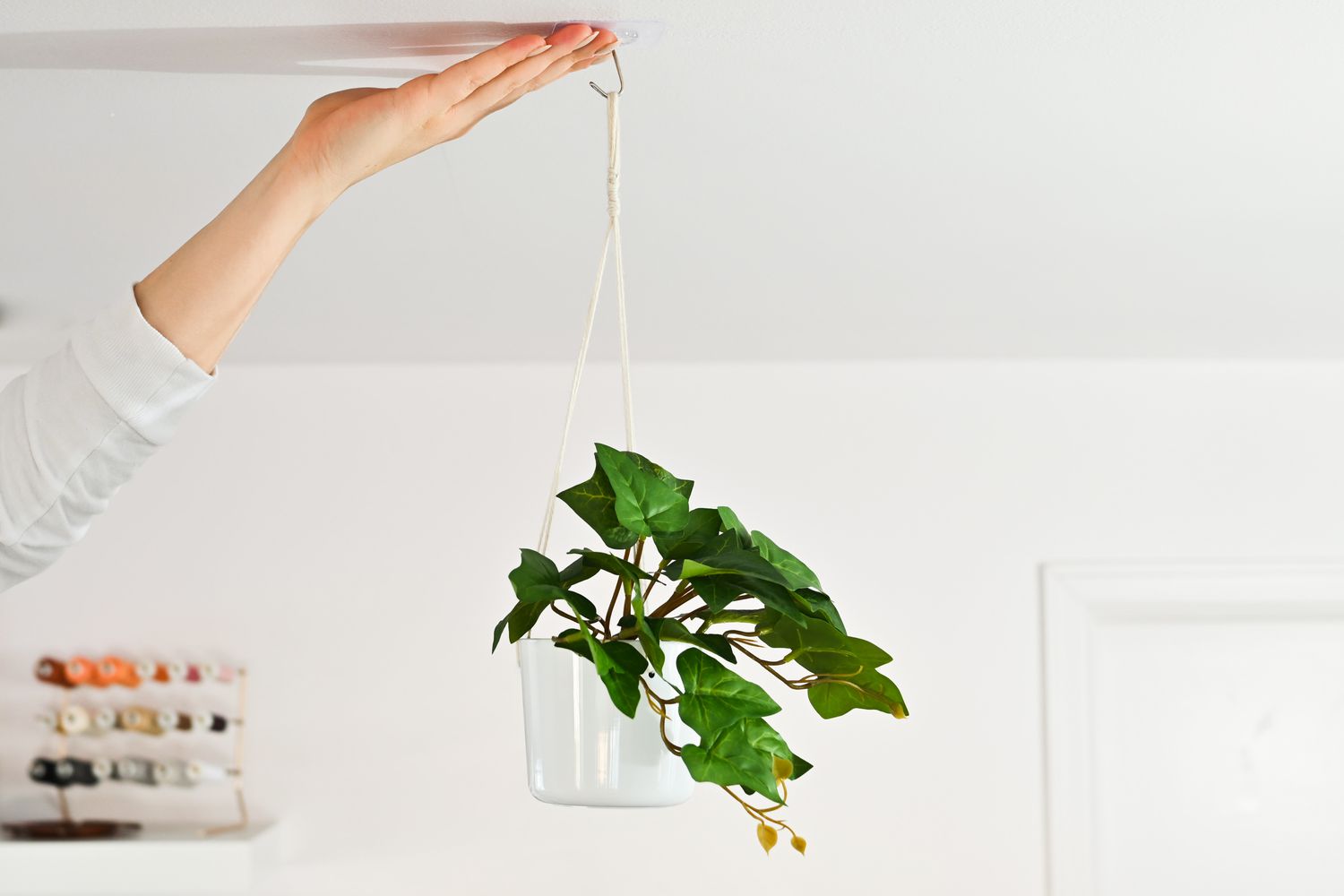

Articles
How To Hang Plants From The Ceiling
Modified: October 20, 2024
Learn how to hang plants from the ceiling with these helpful articles. Find step-by-step guides and tips for creating a stunning hanging garden.
(Many of the links in this article redirect to a specific reviewed product. Your purchase of these products through affiliate links helps to generate commission for Storables.com, at no extra cost. Learn more)
Introduction
Adding hanging plants to your home or office can instantly elevate the aesthetic appeal and bring a touch of nature indoors. Not only do they provide a lush and inviting atmosphere, but hanging plants also offer a practical way to maximize space. Whether you have a small apartment or a spacious living area, hanging plants can add a refreshing and stylish touch to any room.
In this article, we will guide you on how to hang plants from the ceiling effectively. From choosing the right plants to selecting suitable hanging planters, we will cover every step to ensure a successful and visually appealing display. So let’s dive in and discover the secrets to create a stunning indoor oasis with hanging plants!
Key Takeaways:
- Elevate your space with lush hanging plants by choosing the right varieties and suitable planters. Ensure proper care and maintenance to create a stunning indoor oasis.
- Transform your living space into a green sanctuary with expertly hung plants. Select the perfect spot, prepare the ceiling, and provide consistent care for a visually appealing and thriving display.
Read more: How To Hang Plants From Porch Ceiling
Choosing the Right Plant
When selecting plants for hanging from the ceiling, it’s essential to choose varieties that will thrive in this unique environment. Consider the following factors to ensure the longevity and health of your hanging plants:
- Light Requirements: Evaluate the available light in the area where you plan to hang your plants. Some plants, like spider plants and pothos, can tolerate lower light conditions, while others, like succulents, thrive in bright, direct sunlight. Choose plants that match the lighting conditions of the designated area.
- Size and Growth Habit: Consider the height and spread of the plant at maturity. Hanging plants should have a compact growth habit or be trailing in nature. This will prevent them from overwhelming the space and ensure they gracefully cascade from the ceiling.
- Watering Needs: Some hanging plants require frequent watering, while others prefer to dry out between waterings. Take into account your schedule and ability to provide consistent care when selecting plants.
- Humidity Tolerance: If the area where you plan to hang the plants is prone to dry air, opt for plants that can tolerate lower humidity levels. Species such as snake plants and peace lilies are excellent choices for drier environments.
- Pet and Child-Friendliness: If you have pets or small children, ensure that the plants you choose are non-toxic and safe to be around. Consult a reliable source, such as the ASPCA’s list of toxic and non-toxic plants, to make informed decisions.
Some popular hanging plant options that are relatively low maintenance and suitable for various environments include ivy, pothos, spider plant, string of hearts, and philodendron. These plants can thrive in different light conditions and are known for their trailing or cascading growth habit, making them ideal for hanging from the ceiling.
Remember, the right plant will not only survive but also thrive in its new hanging home, adding beauty and vibrancy to your space. Take your time to research and select plants that align with your preferences and the conditions in your home or office.
Selecting the Ideal Hanging Planter
Choosing the right hanging planter is crucial as it not only complements the aesthetic of your space but also ensures the proper growth and support of your plants. Consider the following factors when selecting the ideal hanging planter:
- Material: Hanging planters are available in a variety of materials such as ceramic, terracotta, plastic, macrame, or woven baskets. Each material has its own unique style and benefits. Ceramic and terracotta planters provide a more traditional and elegant look, while plastic or woven baskets offer a more contemporary and bohemian feel. Consider the overall style and ambiance of the room when deciding on the material.
- Size and Depth: The size of the hanging planter should accommodate the root system of the plant comfortably. Ensure that the planter has adequate depth for the plant’s roots to grow and access sufficient water and nutrients. Too small of a planter can restrict growth, while one that is too large for the plant may not provide proper drainage.
- Drainage: It is essential to choose a hanging planter with proper drainage to prevent waterlogged soil and root rot. Look for planters with drainage holes or those that include a saucer to catch excess water. If you find a planter you love that doesn’t have drainage holes, you can create a drainage layer at the bottom using pebbles or charcoal to prevent water buildup.
- Sturdiness: Hanging planters should be sturdy and capable of supporting the weight of the plant and its soil. Assess the quality of the planter and its hanging mechanism to ensure it can withstand the weight of your chosen plant and remain securely fixed to the ceiling hooks.
- Style and Aesthetic: Consider the overall style and aesthetic of your space when selecting a hanging planter. Look for planters that complement the existing decor and add to the visual appeal of the room. Whether you prefer a minimalistic look or a more eclectic vibe, choose a planter that enhances the overall ambiance.
For a cohesive and visually appealing display, consider grouping several hanging planters of various sizes and styles together. This arrangement can create depth and interest while showcasing the unique characteristics of each plant.
By taking into account these factors, you can select the perfect hanging planter that not only enhances the beauty of your plants but also complements the overall style of your space.
Finding the Perfect Spot
Before hanging your plants, it’s essential to find the perfect spot in your home or office. Consider the following factors when determining the ideal location:
- Light Conditions: Take note of the natural light available in different areas of your space. Most hanging plants require moderate to bright indirect light. Avoid placing them in direct sunlight as it can scorch the leaves. Look for spots near windows or areas with filtered light for optimal growth.
- Space and Accessibility: Consider the available space and accessibility of the area where you plan to hang your plants. Ensure that it is easy to reach for watering, maintenance, and any necessary pruning. Avoid areas that may obstruct movement or create obstacles.
- Room Temperature: Evaluate the temperature of the chosen spot. Most indoor plants thrive in average room temperatures ranging from 65°F to 75°F (18°C to 24°C). Avoid areas with extreme temperature fluctuations, such as near heating or cooling vents.
- Humidity Levels: Some plants prefer higher humidity levels. If the spot you’ve chosen has low humidity, you can increase moisture by placing a tray of water nearby, using a humidifier, or misting the plants regularly.
- Aesthetics: Consider the overall visual appeal of the chosen spot. Hanging plants can serve as focal points or accentuate existing decor. Choose areas that will enhance the ambiance and flow of your room.
Additionally, make sure that the chosen spot has a suitable ceiling height and structural support to hold the weight of the hanging plants. Avoid placing them in areas with low ceilings or weak structures.
Once you have identified the perfect spot, you can move on to preparing the ceiling for the installation of ceiling hooks.
Take your time to assess various areas of your space, envision how hanging plants will enhance the atmosphere, and select the spot that best suits your plants’ needs.
Preparing the Ceiling
Before you can hang your plants from the ceiling, it’s important to properly prepare the ceiling to ensure a secure and stable installation. Follow these steps to prepare the ceiling:
- Clean the Area: Start by cleaning the area of the ceiling where you plan to install the hooks. Remove any dust or debris that may prevent the hooks from attaching properly or compromise their stability.
- Identify Ceiling Type: Determine the type of ceiling you have. Common types include drywall, plaster, concrete, or a drop ceiling. The type of ceiling will dictate the appropriate method for installing the hooks.
- Locate Ceiling Joists: If you have a drywall or plaster ceiling, it’s crucial to locate the ceiling joists for secure installation. You can use a stud finder or knock on the ceiling to find a solid and stable area to anchor the hooks. Alternatively, you can use a drop ceiling grid if you have a drop ceiling.
- Measure and Mark: Once you’ve identified the desired location for your hanging plants, measure and mark the precise spots where the hooks will be installed. Ensure that the markings are level and evenly spaced.
- Prepare Tools and Materials: Gather the necessary tools and materials for installing the hooks. This may include a drill, appropriate drill bits, screw hooks, drywall anchors (if needed), a ladder, and safety equipment.
Following these preparation steps will ensure a smooth installation process and provide a strong foundation for hanging your plants securely from the ceiling. It’s essential to take your time and follow any specific instructions or guidelines for your particular ceiling type to avoid any damage or instability.
Once the ceiling is prepared, you can move on to the next step: installing the ceiling hooks.
Use a swivel hook to hang plants from the ceiling, allowing them to rotate for even growth and easier maintenance.
Read more: How To Hang Ornaments From The Ceiling
Installing Ceiling Hooks
Installing ceiling hooks is a critical step in safely hanging your plants from the ceiling. Follow these steps to ensure a secure installation:
- Drill Pilot Holes: If you are installing the hooks into drywall or plaster, start by drilling pilot holes at the marked spots. Use an appropriate drill bit size that matches the diameter of the screw hooks you are using. The pilot holes will help prevent the ceiling from cracking or splitting during installation.
- Insert Drywall Anchors (if necessary): If your ceiling requires additional support, such as in drywall or plaster, insert drywall anchors into the pilot holes. These anchors provide stability and prevent the hooks from pulling out of the ceiling.
- Screw in the Hooks: Gently screw the hooks into the prepared pilot holes or drywall anchors. Apply steady pressure while turning clockwise until the hooks are securely attached to the ceiling. Ensure that the hooks are straight and facing downward.
- Test for Stability: Give the hooks a gentle tug to test their stability. If they feel loose or wobbly, you may need to remove them and repeat the installation process using larger anchors or different hooks. It’s crucial to ensure that the hooks can support the weight of your hanging plants without causing damage or falling.
Remember to follow any specific instructions provided by the manufacturer for the hooks you are using. It’s essential to use proper safety precautions, such as wearing safety glasses and using a stable ladder, when installing the hooks.
Once the hooks are securely in place, you can proceed with the next step: securing the plant hangers.
Securing Plant Hangers
Securing the plant hangers is an essential step to ensure the stability and safety of your hanging plants. Follow these guidelines to effectively secure the hangers:
- Select Suitable Plant Hangers: Choose plant hangers that are compatible with the weight and size of your hanging plants. Look for hangers made of sturdy and durable materials such as metal or strong nylon ropes.
- Attach Hangers to Hooks: Attach the plant hangers to the installed ceiling hooks. Most hangers have hooks, loops, or clasps that can easily be hooked or looped onto the ceiling hooks. Ensure that the hangers are firmly fastened to the hooks.
- Check the Alignment: Once the hangers are attached, check that they are aligned correctly and evenly spaced. This will ensure that the hanging plants will be displayed in an aesthetically pleasing arrangement.
- Adjust the Length: If the hangers are adjustable, adjust the length to your desired height. Consider the height of your ceiling and the length of the hanging plants. You may need to experiment with different lengths to achieve the desired look.
It is important to regularly inspect the plant hangers to ensure that they remain securely fastened. If you notice any signs of looseness or instability, promptly readjust or reinforce the hangers to prevent accidents or damage to your plants.
With the plant hangers properly secured, you’re now ready to move on to the exciting step of hanging your plants from the ceiling!
Hanging Your Plants
Hanging your plants from the ceiling is the moment when your indoor oasis takes shape. Follow these steps to safely and effectively hang your plants:
- Prepare the Plants: Ensure that your plants are well-watered and healthy before hanging them. Consider pruning any long or leggy growth to maintain a more compact and balanced appearance.
- Attach Plants to Hangers: Carefully attach each plant to its designated hanger. Ensure that the hanger is securely supporting the weight of the plant. You can hang multiple plants from a single hook using different lengths of hangers to create an artistic arrangement.
- Check and Adjust: Once the plants are hung, double-check their stability and adjust the positions as needed. Make sure that the plants are evenly spaced and not overcrowded, allowing each one to receive adequate light and airflow.
- Consider Eye-Level Placement: If possible, hang some of your plants at eye level to create a focal point and visually connect with the surrounding space. This can add depth and interest to the overall design.
- Step Back and Assess: Take a moment to step back and assess the arrangement of your hanging plants. Make any necessary adjustments or tweaks to ensure that the display is visually appealing and enhances the atmosphere of the room.
Remember to regularly care for your hanging plants by providing proper watering, adequate light, and occasional fertilization as needed. Monitor their growth and adjust the hangers or prune as necessary to maintain the desired aesthetic.
With your plants expertly hung from the ceiling, you can now enjoy the beauty and benefits of a green oasis indoors.
Maintaining and Caring for Hanging Plants
Proper maintenance and care are essential to ensure the health and longevity of your hanging plants. Follow these tips to keep your plants thriving:
- Watering: Monitor the moisture level of the soil regularly and water your hanging plants as needed. Avoid overwatering, which can lead to root rot, and underwatering, which can cause the plants to wilt. It’s best to water thoroughly and allow excess water to drain out of the planter.
- Light: Pay attention to the light requirements of each plant and ensure they are placed in suitable locations. Rotate their positions periodically to promote even growth and prevent one side from receiving more light than the other.
- Pruning: Regularly remove any yellowing, dead, or leggy foliage to maintain the overall health and appearance of your hanging plants. Pruning encourages new growth and prevents the plants from becoming overcrowded or unbalanced.
- Fertilizing: Depending on the plant species and the type of potting mix used, you may need to provide supplemental nutrients through fertilizers. Follow the instructions on the fertilizer packaging and apply according to the recommended schedule.
- Pest Control: Keep an eye out for pests such as aphids, spider mites, or mealybugs that may infest your hanging plants. Regularly inspect the foliage and take necessary measures, such as washing the leaves with a gentle soapy solution or using organic insecticides, to control and prevent pest infestations.
- Support and Maintenance: Check the stability of the hooks, hangers, and plant attachments periodically. Ensure that everything is securely fastened and make any adjustments or repairs as needed.
Remember to observe and attune to the needs of your specific plants. Each plant may have different requirements, so stay vigilant and respond accordingly to provide the best care.
By maintaining a healthy environment, monitoring plant health, and addressing any issues promptly, you can enjoy the beauty and benefits of lush and thriving hanging plants.
Read more: How To Hang A Picture From The Ceiling
Conclusion
Congratulations! You have now learned how to hang plants from the ceiling, transforming your living space into a lush and inviting oasis. By following the steps outlined in this guide, you can ensure the proper installation, selection, and care of your hanging plants.
Remember to choose the right plants that are well-suited for hanging, taking into consideration factors such as light requirements, size, and growth habit. Selecting the perfect hanging planters that complement your space is equally important. Ensure proper support and stability by preparing the ceiling, installing the appropriate hooks, and securing the plant hangers securely.
Once your plants are hanging beautifully, it’s vital to provide consistent care and maintenance. Water your plants appropriately, provide adequate light, and regularly prune and fertilize as needed. Keep an eye out for pests and address any issues promptly to ensure the health and longevity of your hanging plants.
The addition of hanging plants brings a touch of nature, beauty, and serenity into your home or office. They improve indoor air quality, create interest and focal points, and add a sense of tranquility to your surroundings. So go ahead and enjoy the benefits of your new hanging plant display!
Now that you have mastered the art of hanging plants from the ceiling, it’s time to embrace your creativity and style. Experiment with different plant combinations, heights, and arrangements to create a truly unique and captivating indoor garden.
Remember to have fun with the process and let your plants bring you joy and inspiration every day. Happy hanging!
Frequently Asked Questions about How To Hang Plants From The Ceiling
Was this page helpful?
At Storables.com, we guarantee accurate and reliable information. Our content, validated by Expert Board Contributors, is crafted following stringent Editorial Policies. We're committed to providing you with well-researched, expert-backed insights for all your informational needs.
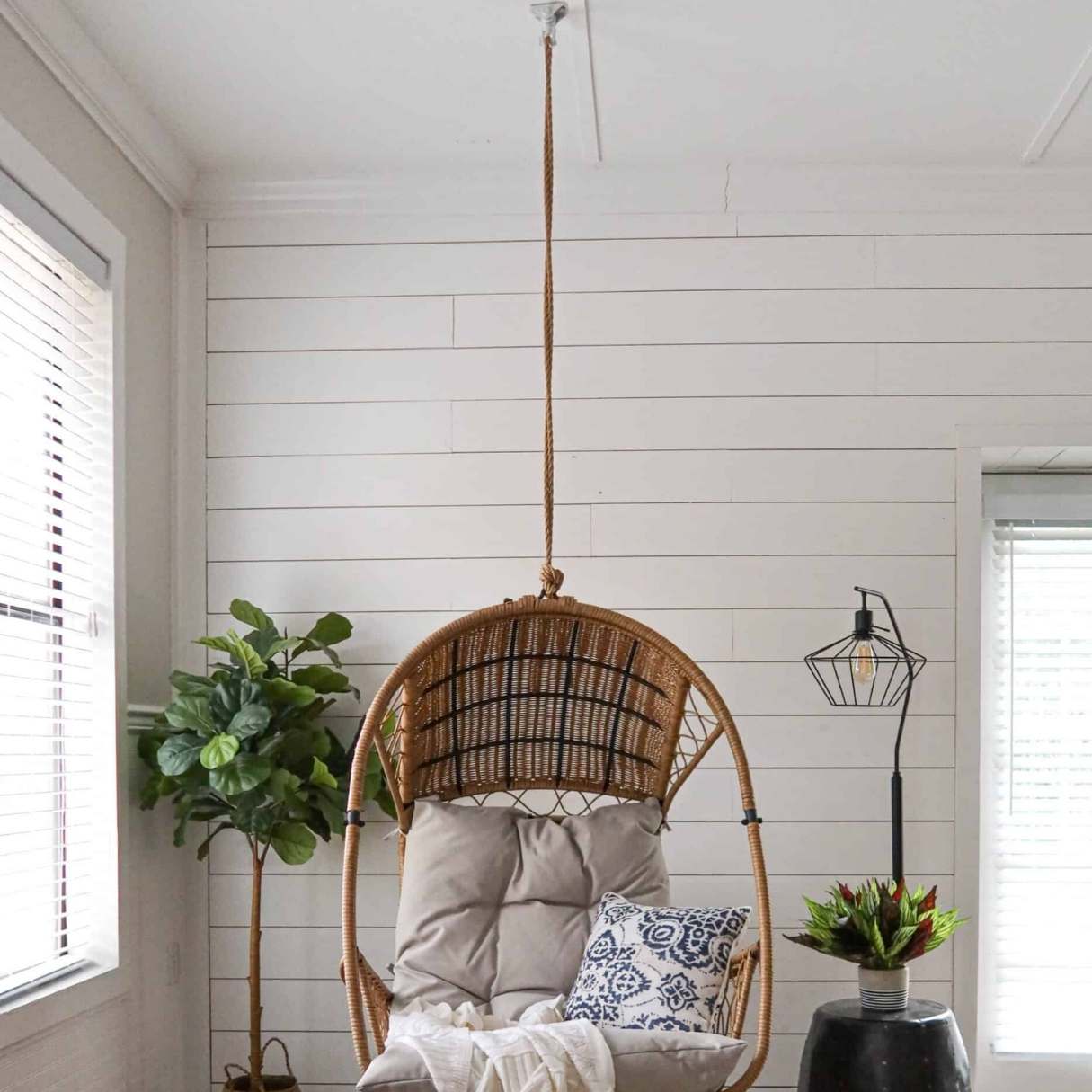



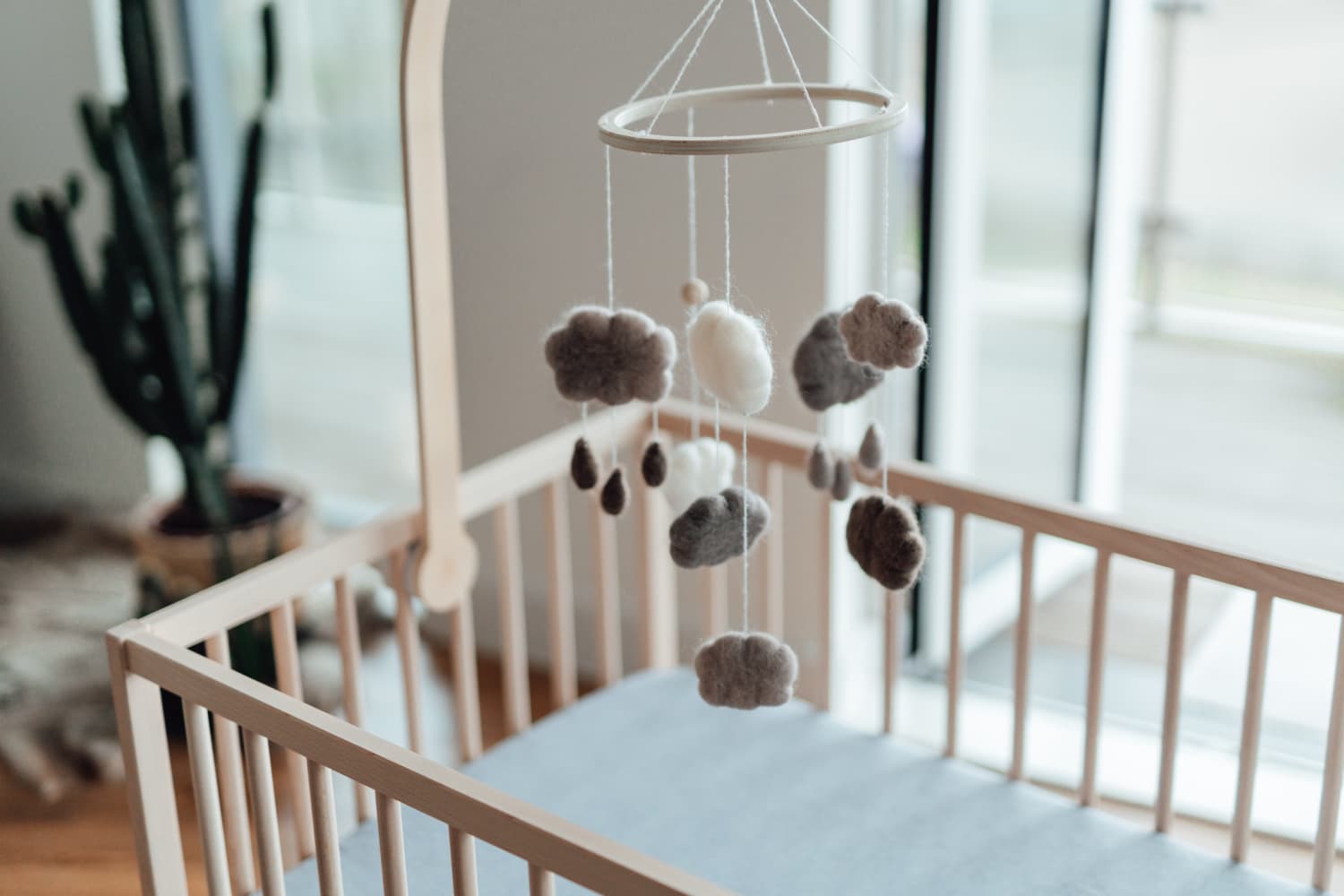
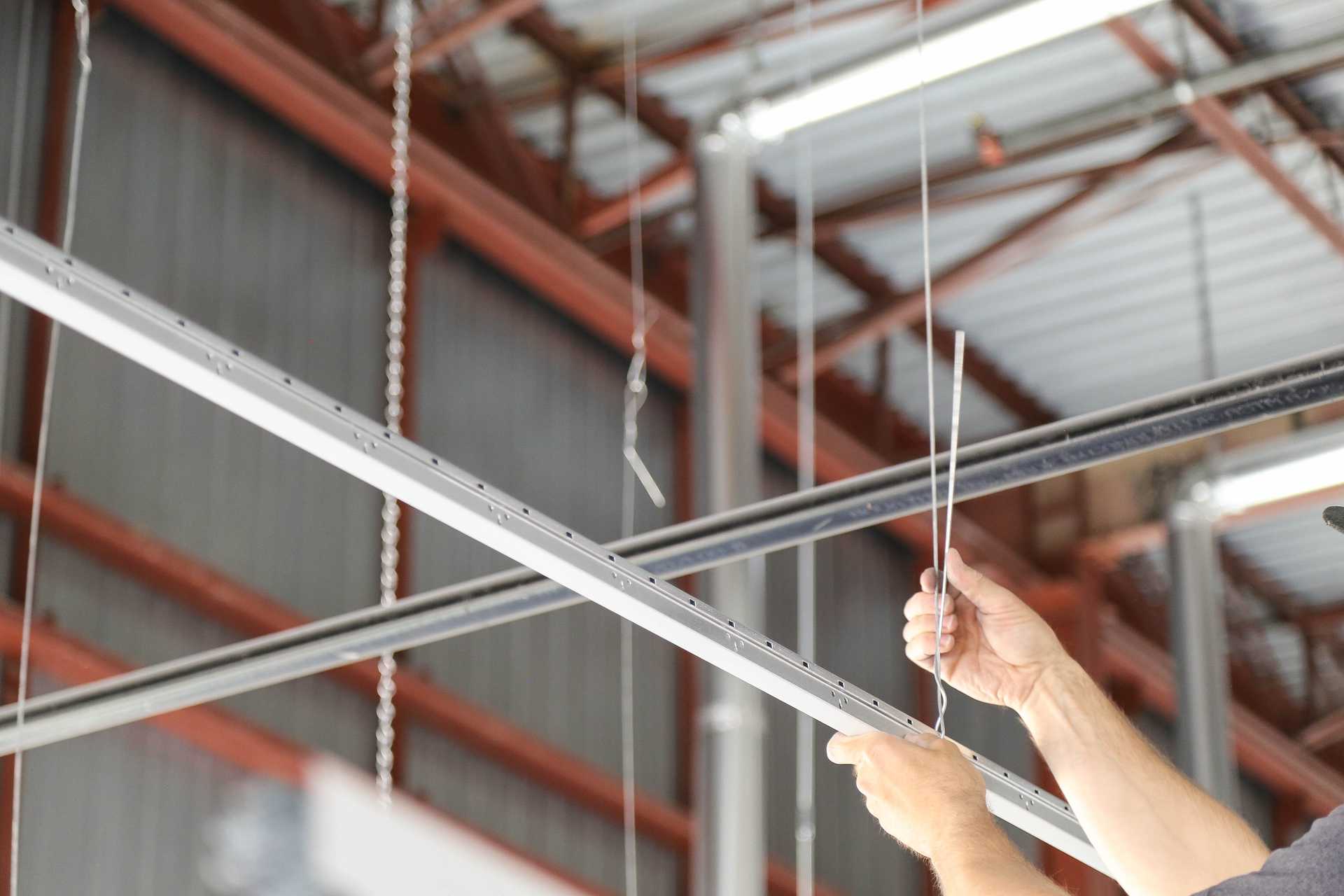


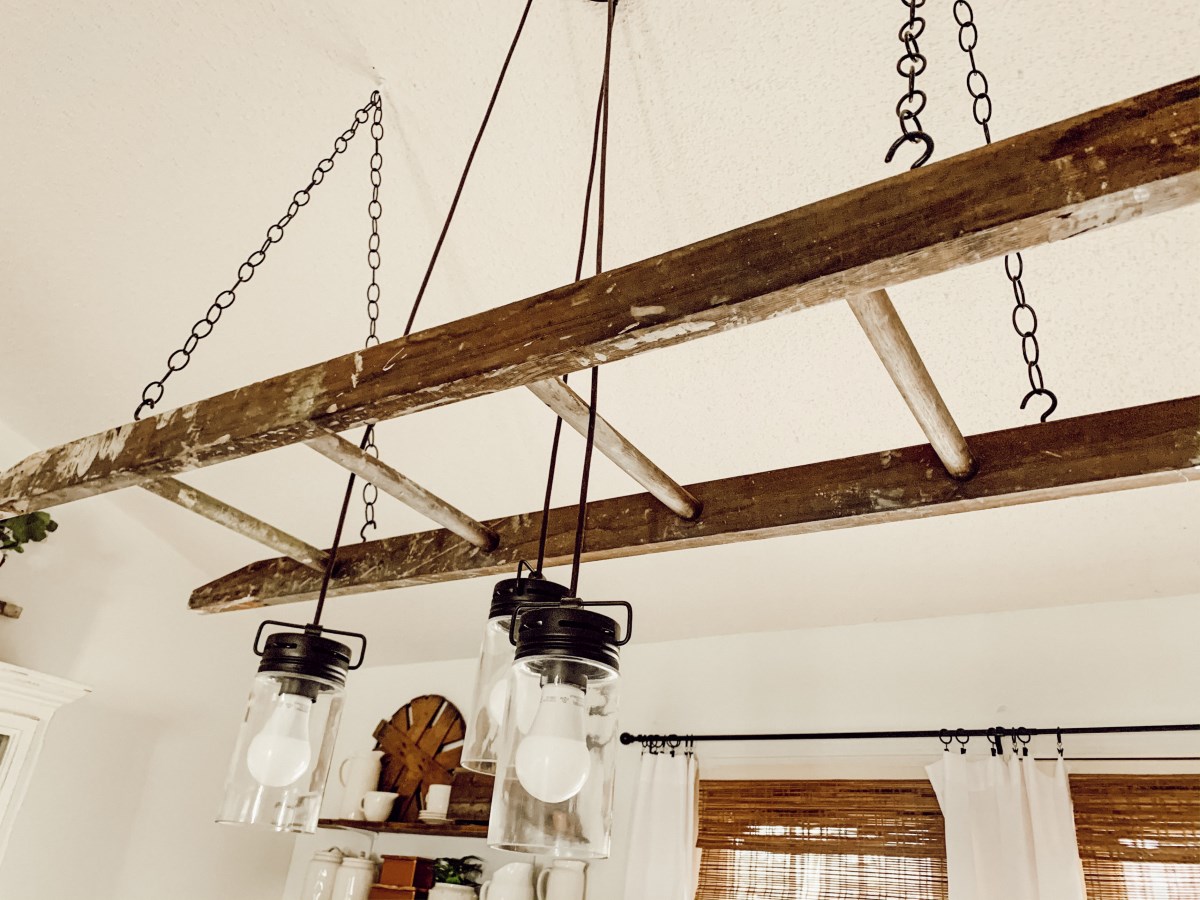
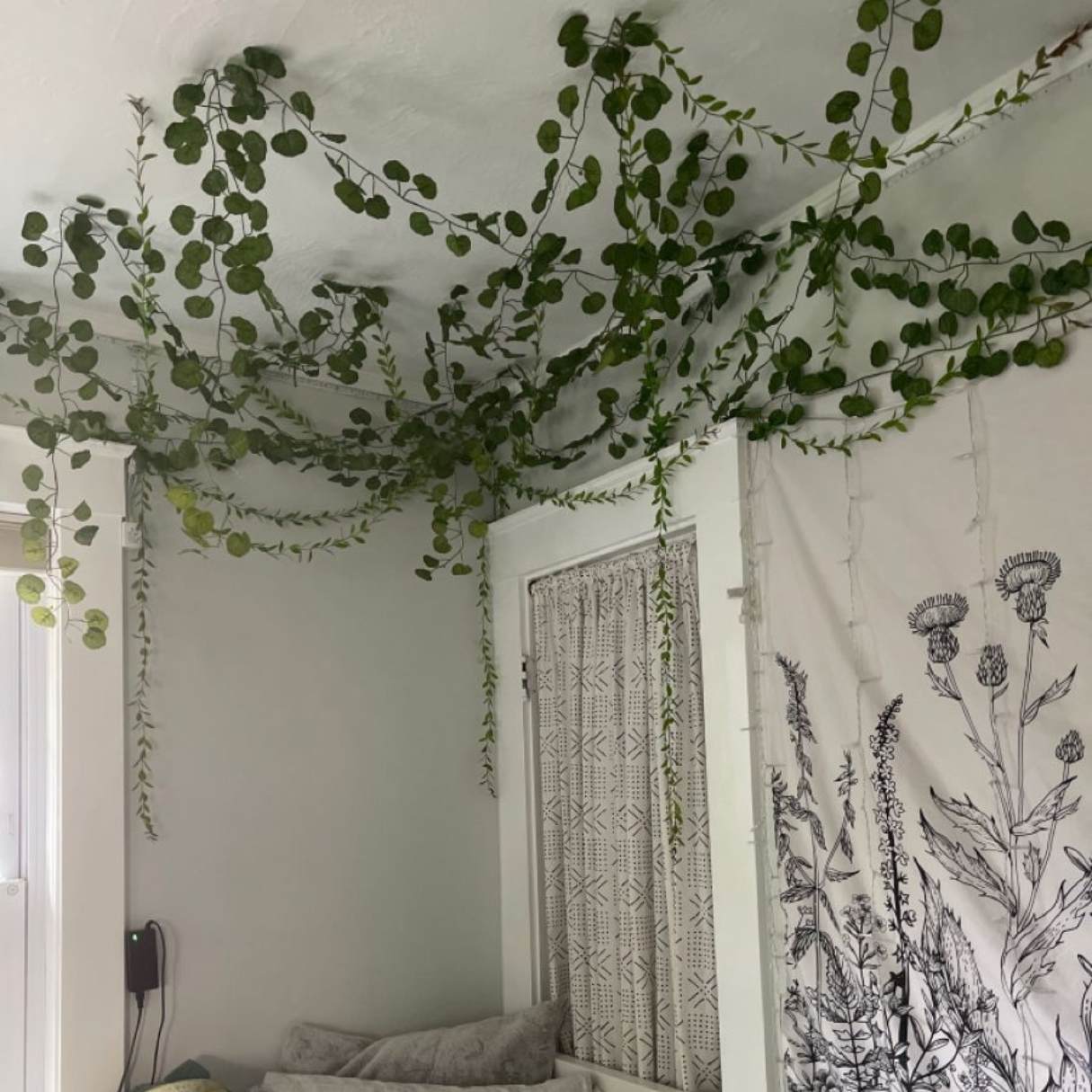
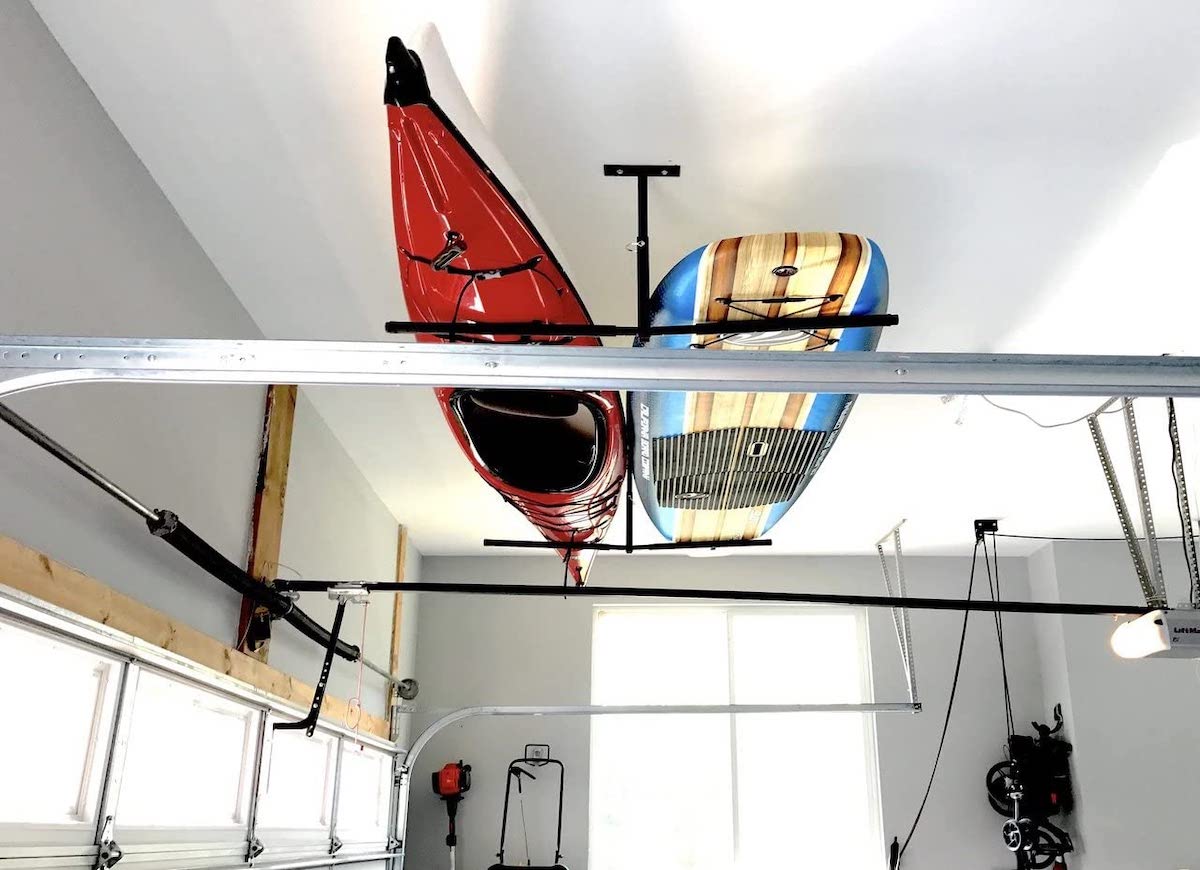



0 thoughts on “How To Hang Plants From The Ceiling”